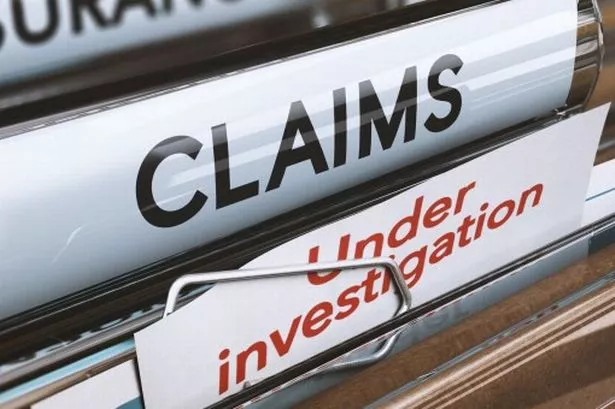Most insurance customers do not intend to commit fraud when it comes to negotiations; rather, they may view lying as part of the negotiating process.
Soft fraud refers to any fraudulent act committed through deceptive means; examples include inflating an existing claim, falsifying information on an insurance application form, or even inventing policies from scratch.
1. Investigate the Claim
Insurance fraud should always be investigated thoroughly. Insurance companies should review accompanying documentation such as photos, receipts, invoices, police reports, and medical records to identify any red flags such as inconsistent lighting levels or fonts not matching up across documents as these could indicate suspicious activities.
Property fraud often takes the form of fraudulently claiming items that are newer and/or more costly than what was originally owned. Investigating a subject’s lifestyle and finances to assess if they can afford the items claimed can provide crucial insight while interviewing friends and neighbors of the claimant can reveal information that may expose previous fraudulent claims made against insurance companies. Whatever form it takes, any attempt at illegally collecting money from insurers constitutes criminal behavior and should be prosecuted accordingly.
2. Investigate the Evidence
Insurance fraud is an enormously costly problem that impedes everyone. False claims swell up prices for all customers and must be investigated carefully by insurers to protect customers. Investigators should conduct in-depth investigations that take into account all available sources, including property liens and financial records (checking bankruptcy filings), social media, and possibly friends and neighbors who might have information. Investigators might interview witnesses as part of their inquiry or conduct surveillance on suspects – just make sure that state laws allow recording people without their permission first!
Some fraudulent schemes are easy to identify, such as staging a car accident or falsifying death certificates to collect life insurance payments. Other instances are more subtle. Padding claims are one example of soft fraud where someone exaggerates injuries or property damages to secure a higher payout.
3. Gather Additional Evidence
Trust, but verification is of utmost importance when investigating false insurance claims. In addition to photos of undamaged vehicles and security footage from the supposed accident scene, other forms of evidence that prove that what was claimed did not take place are essential in disproving fraudulent claims. Alibis can help disprove false accusations.
Fraudsters may enlist others to assist them in legitimizing their false insurance claims. They might enlist friends or family to falsify documentation of repair costs, police officers file false reports against themselves, or doctors to write fraudulent medical diagnoses to support claims that never occurred in reality. Insurance fraud is an expensive crime that affects all policyholders. By quickly taking action when suspicious activity arises and working closely with your lawyer to help prevent fraud from taking place, you can protect yourself from being the victim of insurance fraud.
4. Submit a Counterclaim
Fraudulent insurance claims take a heavy toll, costing insurers money while increasing premiums and restricting coverage options for honest policyholders. When filing fraudulent claims, all involved must work closely with investigators and provide any additional information they request.
Disputing fraudulent claims is one way of fighting back against fraudsters and clearing your name. For assistance, consult an attorney specializing in insurance disputes who will review your contract and policy documents to assess if an insurer violated their duty of good faith and fair dealing and guide you in filing an insurance fraud dispute or bad faith insurance lawsuit early. This step alone could make all the difference for its eventual success.
5. Take Legal Action
Insurance fraud is a serious crime that affects us all. From staged auto accidents, false food-and-beverage complaints, or murder-for-profit schemes, fraudsters take money away that should cover real losses while raising policy rates and raising their premiums for everyone else.
Fraudsters often employ third parties to substantiate their fake claims; for instance, hiring mechanics to falsify documentation of repairs, police to file false damage reports, or doctors to document injuries that did not occur. These crimes can be difficult to detect as fraudsters often employ others to support their false claims. For instance, using mechanics falsifying documentation of repairs; police filing false damage reports or doctors documenting injuries that never actually existed may all help facilitate their fraudulent schemes.
Fraudulent activities are found across industries – from health care, automobile, property, and life and unemployment. While each form of fraud has unique weaknesses, all share certain traits; therefore, we must understand how fraud works so we can take the necessary measures to combat its incidence.
6. Negotiate with the Insurer
Insurance fraud is both costly and difficult to detect, yet recognizing its hallmark indicators may help your organization and yourself avoid becoming victims. One effective method of combatting fraud is ensuring all policies are being sold legally, which can be done through KYC/DD processes that verify personal information and documentation.
An effective way to prevent fraud is through regular audits of claims and transactions. Audits will help detect red flags such as suspicious monetary disputes or delayed customer payments that could indicate potential fraudulent activity. Insurance fraud costs Americans billions each year – we must understand its various forms to take appropriate steps against it.
7. Consult an Attorney
Identification and prompt action taken upon discovery are vitally important when it comes to insurance fraud. Red flags could include unfamiliar claims, suspicious paperwork, or lack of evidence for an event claimed on an insurance claim form. Insurance fraud takes many forms, from staging car accidents and falsely reporting injuries to staging deaths for life insurance payouts, padding initial claims, or exaggerating damage caused by natural disasters.
No matter the method of operation, Texas law considers any insurance fraud scheme to be illegal. Your attorney can help defend you against false accusations while also providing the resources needed to investigate suspicious activity and file criminal complaints against those responsible. These fraudulent acts may incur fines, penalties, or even imprisonment as punishments.
